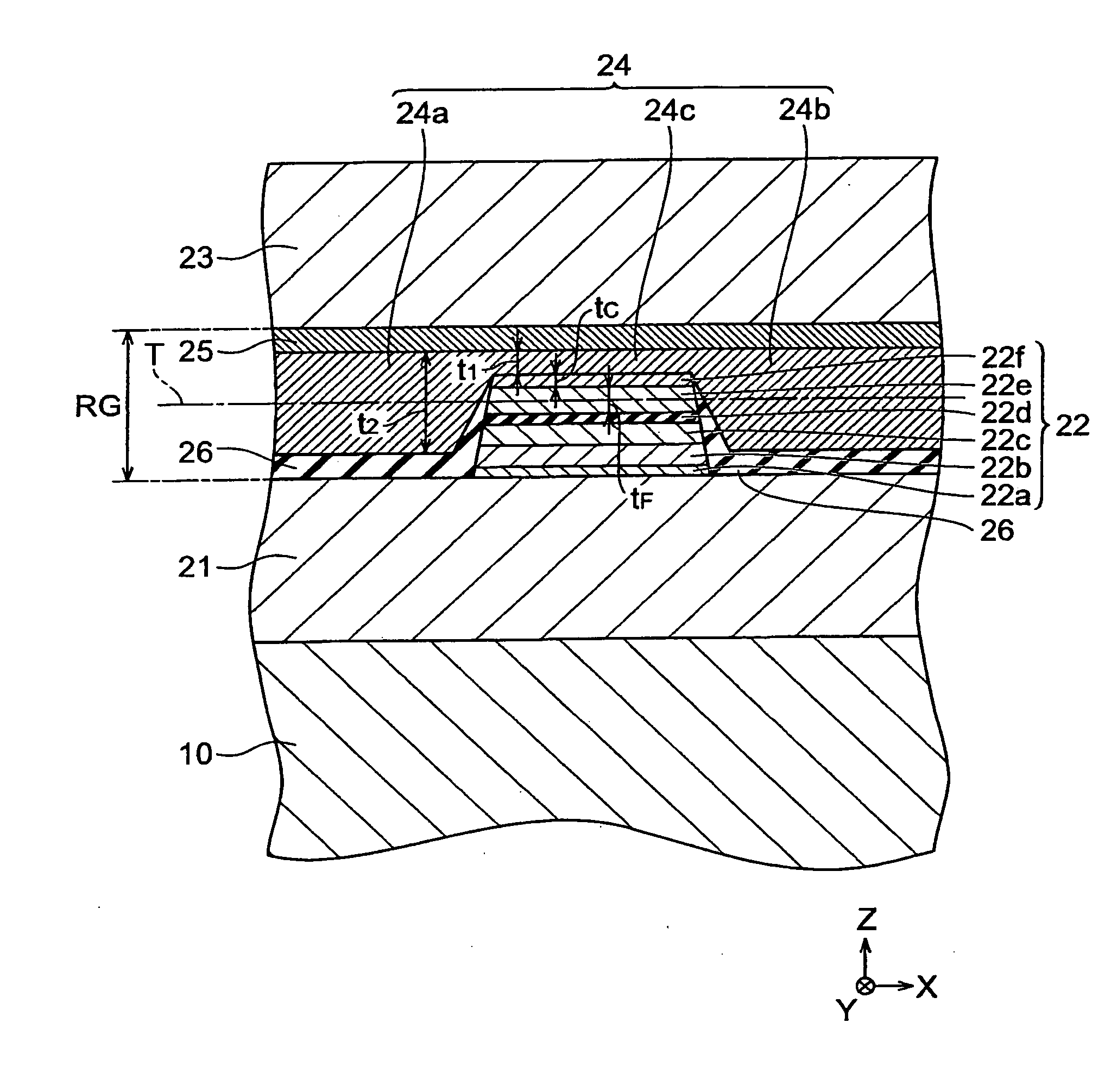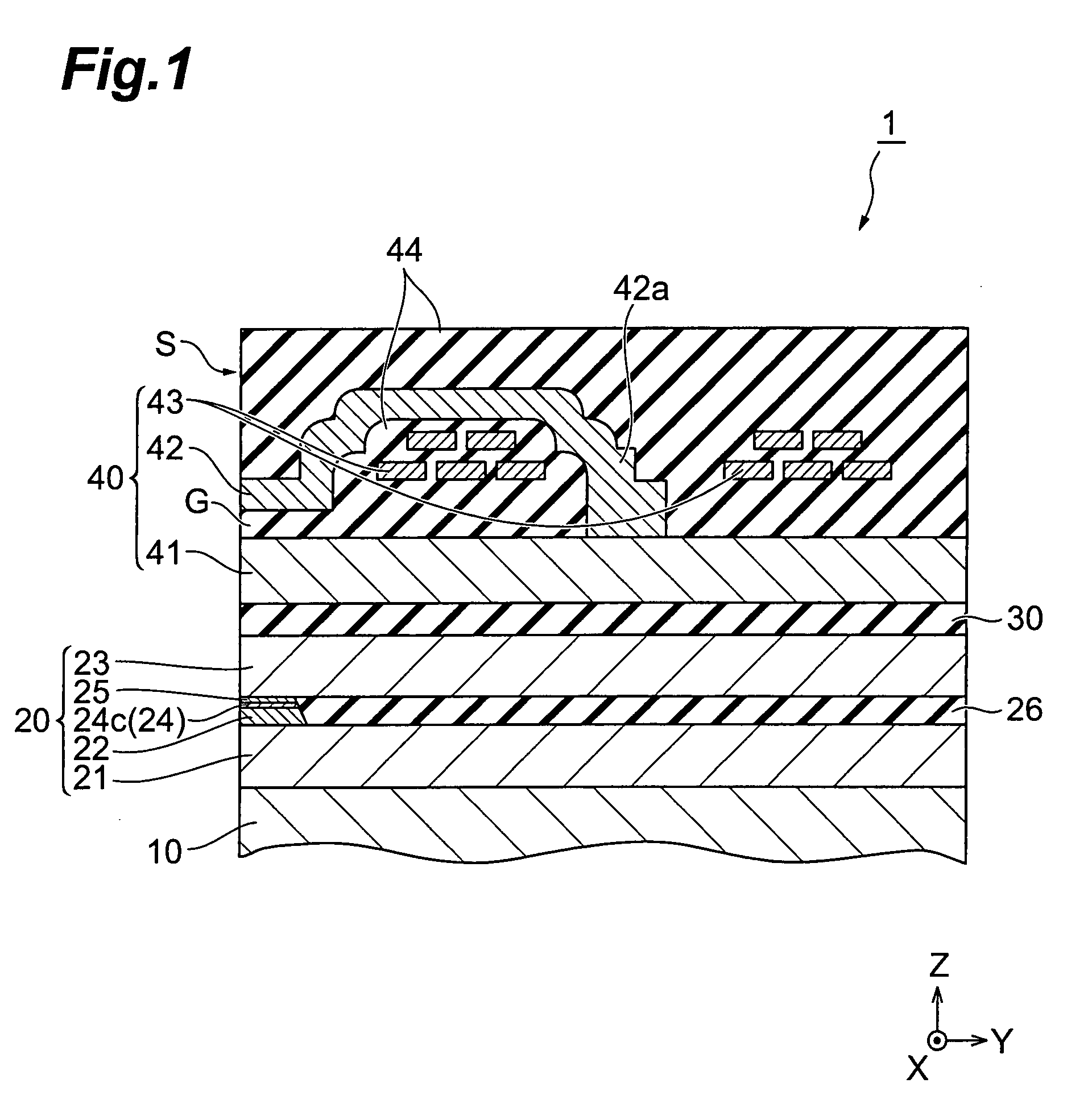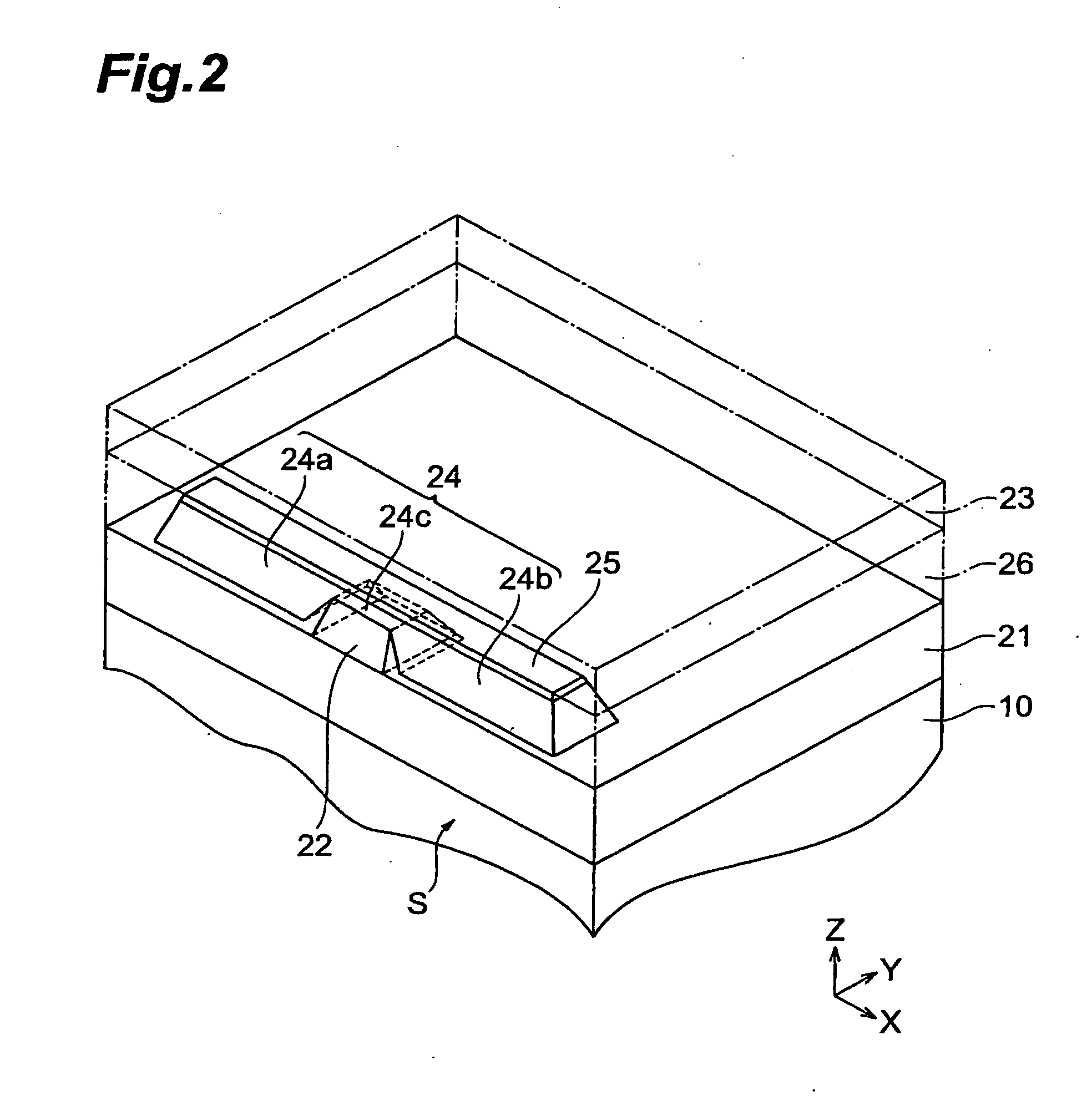Thin film magnetic head characterized in bias-applying layer
a thin film, magnetic head technology, applied in the field of thin film magnetic head, can solve the problems of asymmetry characteristic (output amplitude asymmetry) degraded, noise may be increased, etc., and achieve the effect of reducing noise and reducing output amplitude asymmetry
- Summary
- Abstract
- Description
- Claims
- Application Information
AI Technical Summary
Benefits of technology
Problems solved by technology
Method used
Image
Examples
first embodiment
[0040](Configuration of Thin Film Magnetic Head)
[0041]The configuration of the thin film magnetic head 1 of the first embodiment is explained, referring to FIG. 1 through FIG. 3.
[0042]The thin film magnetic head 1 is provided on the upper portion of a base 10, and is one portion of a magnetic head slider, not shown. The thin film magnetic head 1 is a hybrid-type thin film magnetic head, formed by layering on the base 10 in order a read head portion 20, having a TMR (Tunneling Magneto Resistance) element 22, described below; an insulating layer 30; and a recording head portion 40, as an induction-type electromagnetic transducer element for writing. In the thin film magnetic head 1, the end face on the left side in FIG. 1 is a media-opposed surface (air bearing surface) S, which opposes the recording surface of the hard disk, not shown. The base 10 is not shown in detail, a base layer of alumina (Al2O3) or another electrically insulating material is formed to a thickness of approximat...
example 1-1
[0071]In example 1-1, the thickness t1 in the layering direction of the third portion 24c of the bias-applying layer 24 in the read head portion 20 of the thin film magnetic head 1 of the first embodiment is set to 10 nm, the thickness t2 in the layering direction of the first portion 24a and the second portion 24b of the bias-applying layer 24 is set to 30 nm, the read gap RG is set to 45 nm, the straight-line distance t4 between the bias-applying layer 24 and the lower magnetic shield layer 21 in the layering direction and the straight-line distance t5 between the bias-applying layer 24 and the upper magnetic shield layer 23 in the layering direction are both set to 7.5 nm, the distance t6 between the lower face of the first portion 24a and the lower face of the second portion 24b is set to 125 nm, the straight-line distance tC between the free layer 22e and the third portion 24c in the layering direction is set to 5 nm, the thickness tF of the free layer 22e in the layering direc...
example 1-2
[0072]In example 1-2, other than setting the thickness t1 in the layering direction of the third portion 24c of the bias-applying layer 24 to 12.5 nm and setting the straight-line distance tC in the layering direction between the free layer 22e and the third portion 24c to 2.5 nm, parameters were the same as in example 1-1.
PUM
| Property | Measurement | Unit |
|---|---|---|
| thickness | aaaaa | aaaaa |
| thickness | aaaaa | aaaaa |
| thickness tF | aaaaa | aaaaa |
Abstract
Description
Claims
Application Information
 Login to View More
Login to View More - R&D
- Intellectual Property
- Life Sciences
- Materials
- Tech Scout
- Unparalleled Data Quality
- Higher Quality Content
- 60% Fewer Hallucinations
Browse by: Latest US Patents, China's latest patents, Technical Efficacy Thesaurus, Application Domain, Technology Topic, Popular Technical Reports.
© 2025 PatSnap. All rights reserved.Legal|Privacy policy|Modern Slavery Act Transparency Statement|Sitemap|About US| Contact US: help@patsnap.com



